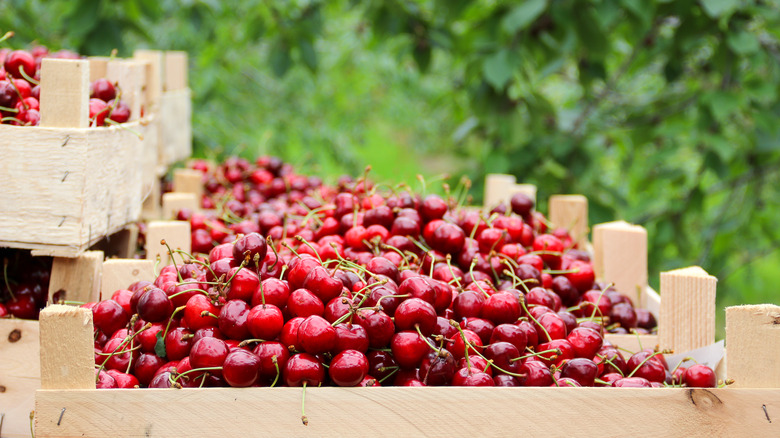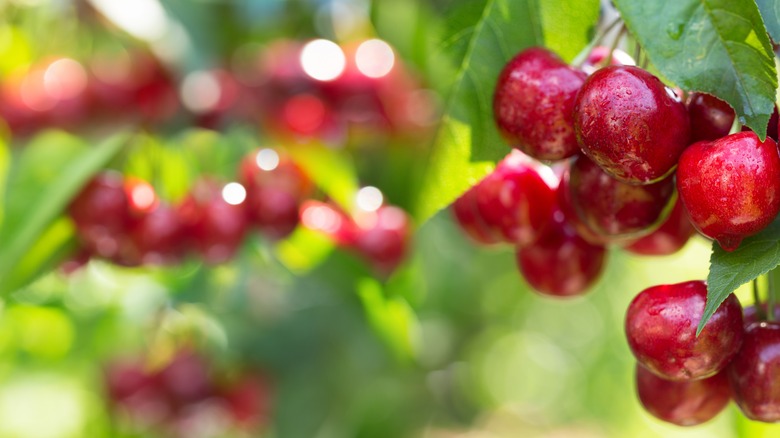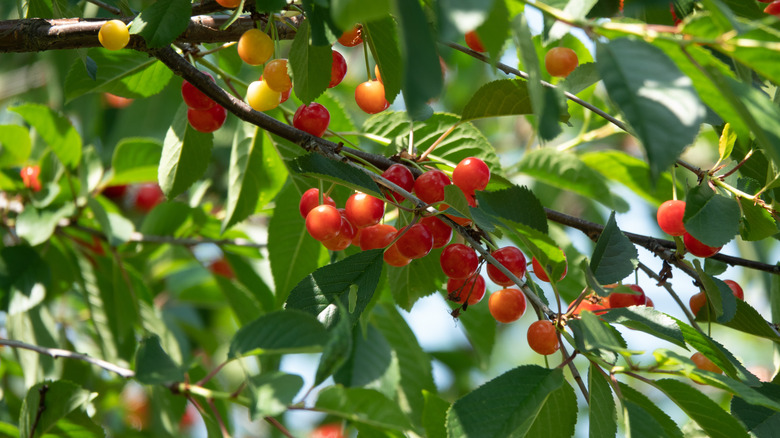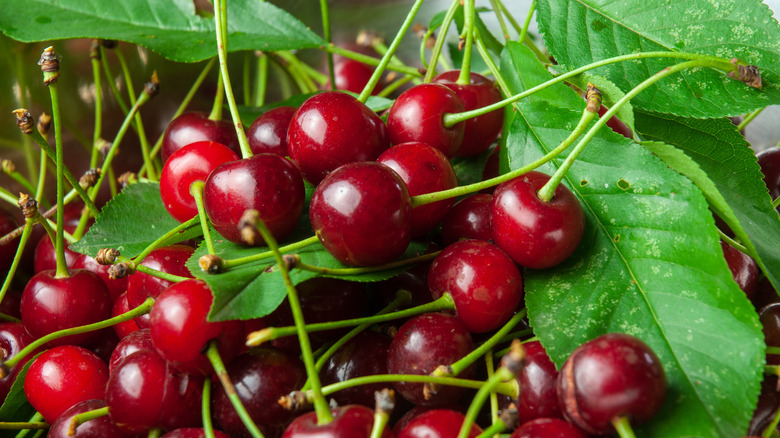The Two Types Of Tart Cherries Explained
Of the many shades of red in the world, perhaps none are so appetizing as the most perfect shiny, ruddy cherries. You can pick them yourself, pop them right into your mouth or bake them into a pie. Hell, some of you can even tie the stems in knots using your tongue, but there's more to this fruit than meets the eye.
There are a multitude of cherries all with their own flavors, cultivation techniques, and optimal consumption methods. There are even specific times that are better for some cultivars than for others. Of the many varieties, most are grown in the United States, so if you'd like to go picking (it's quite an enjoyable experience from which you walk away with delicious, fresh fruit) just look up your region and the kinds of cherries that are local and ripe. According to Cherry Festival, many cherries are grown in the states of Washington, Oregon, and Michigan, just to name a few.
Sweet vs Tart
Cherries generally fall into two categories comfortably, sweet and tart. Sweet cherries, or Prunus avium, are typically a bit larger than their sour counterparts and ripen during the summer. It's best to look for them during the May to August months, per Bon Appétit. Sweet cherries are the ones that look great simply washed and placed in a great heaping pile in a bowl. They are sweet, just as the name implies, and best eaten fresh.
Tart cherries, or Prunus cerasus, on the other hand are typically a tad smaller and obviously not quite as sweet (via Bon Apétit). When eaten raw, they can taste quite sour, sometimes bordering on untenably bitter. You'd think that tart cherries would not seem as desirable as their sweet cousins, but you'd be dead wrong. Tart cherries take cooked or baked dishes to heights that sweet cherries could only dream. Their stronger flavors hold up better to the various cooking processes and are thus sought after by chefs the world over for their robust flavors. But, even this specific category coin of cherry has two sides.
Heads: Amarelle
According to the Michigan State University College of Agriculture & Natural Resources, the basic difference between the two types of tart cherries are their pigmentation levels in the flesh or pulp. Amarelle cherries only have pigmentation throughout their skin, thus giving it the classic red cherry look, but the flesh of the cherry is actually clear and for the most part devoid of color.
Of the varieties of Amarelle cherries that exist, the Montmorency cherry is by far the most popular, with Montmorency cherries making up 94% of all the tart cherries consumed in the United States, per Choose Cherries. Most Montmorency cherries are a very bright red color, but some can still end up a darker shade. Like many fruits, they are packed with nutritional benefits as well as amazing flavors; in fact, Montmorency cherries specifically have been the topic of studies meant to discern the specific health benefits of Amarelle cherries. Some of these studies have shown that cherry consumption has helped with everything from gout and arthritis to exercise recovery.
Tails: Morello
On the other side of this delicious glossy red coin is the Morello variety of tart cherries. These cherries have pigmentation throughout their flesh or pulp as well as in their skin, which gives them that classic deep red almost purple cherry coloration. According to Leafy Place, these crimson beauties are difficult to eat raw (they'll pucker even the sweetest of smiling faces). As with all cherries, however, they will ripen with age and can actually be quite enjoyable once fully ripened, if not a tad strong.
Because of their rich, deep colors and because the tart cherries are superior to sweet ones when cooking, Morello cherries are a particular favorite of chefs and patissiers that wish to take advantage of both the visual and gustatory qualities of these wonderfully potent cherries. So, when you're stocking up on cherries and find yourself at a crossroads, flip a coin and get to cooking.



